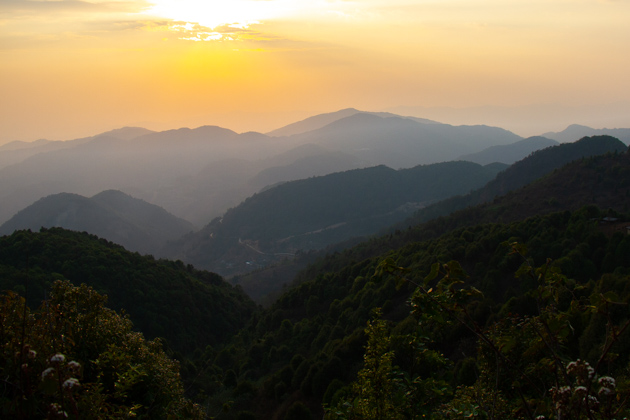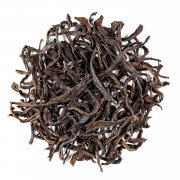Characteristics and differences between Phoenix Dancong, Tieguanyin, Dahongpao Rock Tea and Taiwan Oolong Tea
What is oolong tea? To put it simply, oolong tea is a semi-oxidized tea between green tea and black tea. The oxidation rate of green tea is very low, close to zero, while the leaves of black tea are completely oxidized. The oxidation degree of oolong tea is between green tea and black tea, and the oxidation degree of some tea is about 10-20%, while that of some tea is about 70-80%. These different degrees of oxidation are one of the reasons why there are so many different varieties of oolong tea, each with its own unique taste. This makes it one of the most interesting and exciting types of tea that our tea fans experience and explore. Different types of oolong tea the best way to explain the existing different types of oolong tea is through the historical production of oolong tea in key areas: southern Fujian (hometown of Tieguanyin), northern Fujian (rock tea), Guangdong (Dancong) and Taiwan.

Southern Fujian Oolong Tea Southern Fujian is the hometown of Tieguanyin, one of the top ten famous teas in China. This is probably the most common and famous oolong tea, which is a kind of ball roll oolong tea. In terms of taste, it is usually very floral, with oxidation levels ranging from 20% to 50%. The most popular version in the world is often slightly roasted green. However, southern Fujian produces more than Tieguanyin oolong tea. Other varieties, such as golden osmanthus (also known as sweet-scented osmanthus) and Baiya Qilan, are becoming more and more popular with tea lovers around the world. In particular, Baiya Qilan, it is a very complex, floral and fragrant tea, looks very much like Tieguanyin, because it is also a ball roll oolong tea, but has different taste contours and full and soft taste. Northern Fujian oolong tea, also known as Wuyi rock tea, northern Fujian oolong tea (also known as rock tea) northern Fujian produces a unique oolong tea, known as "rock tea", the best variety comes from Wuyi Mountain. The most expensive tea in the world is a rock tea called Dahongpao. This is a legendary tea with almost mythical status. This special tea is made from the leaves of six original mother trees. Dahongpao mother tree Dahongpao is now a widely used rock tea, but obviously, it does not belong to the same level of legend. Rou Gui, Narcissus and Bletilla striata are other famous rock teas. Guangdong Dancong Oolong Tea produces Dancong Oolong Tea in Chaozhou, Guangdong Province. Another strip oolong tea, Dancong tea is famous for its strong aroma and many different types of aroma. It is said that the single clump has more than 100 different subvarieties, divided into about 10 different main aroma categories, each with its own unique taste and flavor. The word "single clump" literally means "single stem". If you look at a real single-clump tea tree, you will find that it is different from ordinary tea trees in that they are single trunks rather than long, interconnected tea bushes. All varieties of single-clump oolong tea come from a series of "mother trees" that cut branches from single-clump oolong tea and gradually cultivate them over time, forming many of the different aroma varieties we have today. Milan (Milan fragrance), duck dung (duck food fragrance) and almond fragrance (Xinren incense) are some of the more popular varieties of Dancong oolong tea. Taiwan oolong tea finally, we have Taiwan oolong tea. Taiwan's tea trees were first introduced from Fujian in the late 18th century and have developed their own unique characteristics since then. It is not surprising that many oolong teas in Taiwan have similar characteristics to oolong teas in southern Fujian, such as Tieguanyin, but there are also some oolong teas, such as the "Beauty of the East" in summer, which is unique to Taiwan. "Oriental Beauty" oolong tea is unique in that its leaves need to be bitten by leafhopper insects, and after leafhopper insects bite, the tea releases certain enzymes to protect itself from these insects. Therefore, the release of these enzymes helps to give tea unique taste and characteristics.
Important Notice :
前街咖啡 FrontStreet Coffee has moved to new addredd:
FrontStreet Coffee Address: 315,Donghua East Road,GuangZhou
Tel:020 38364473
- Prev

How to distinguish the phoenix single fir tea with yellow branch fragrance in Song Dynasty? Good Song kind of single fir tea. What does it taste like?
This is a phrase I hear often and to some extent I agree. Everyone likes different things and has different tastes. If you like it, who am I to say it's bad? I found that, from a tea vendor's point of view, this attitude doesn't solve the problem very well. In fact, it's a bit
- Next

The production process of Phoenix Dancong tea and Tieguanyin explain which is better, Lingtou Dancong tea or Phoenix Dancong tea.
Once the tea is picked, there are generally six steps in the production of oolong tea: withering, stirring, killing, kneading, drying and baking. Although the varieties of oolong tea vary from region to region, each step is briefly described here. Withered tea leaves will be left outside withered after indoor withering. In
Related
- The milk tea cup becomes smaller?! Overlord Tea Girl launches a new "Return to Yunnan" series
- Accused of selling counterfeit and high-priced coffee beans! Well-known boutique coffee brand "Oukelao" bowed and apologized!
- How to make espresso dumplings? Can I eat coffee and glutinous rice balls together?
- Save the unformed and stagnant powder cakes in one second! What is the problem with stagnant water in the powder bowl of the espresso machine?
- What does hand-brewed coffee stop mean? Why is it not recommended to make coffee by hand?
- Is it normal to smell like coffee? Why does coffee smell like alcohol? What's wrong with the strong smell of cold extract ice dripping ice brewed coffee?
- How to solve the problem that hand-brewed coffee extraction takes too long? Why is the water flowing so slowly when making coffee?
- The main points of making Australian white coffee, the proportion details, how does Australian white properly foam and blend the flowers?
- Can ice water make cold extract coffee? What is the difference between room temperature water and ice water for making cold coffee?
- What milk is best for making latte and white Dirty coffee? What is the difference between different brands of fresh milk and pure milk for making coffee?

